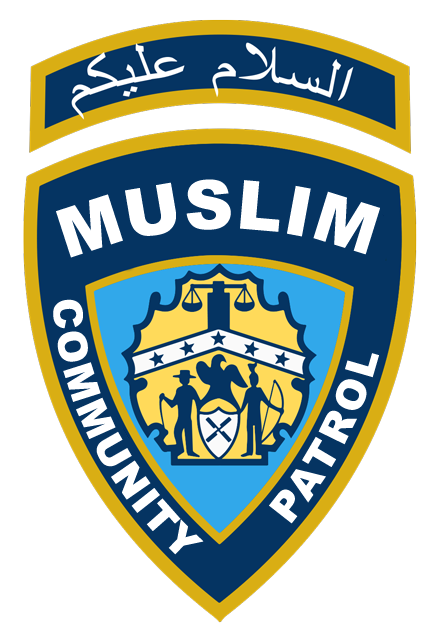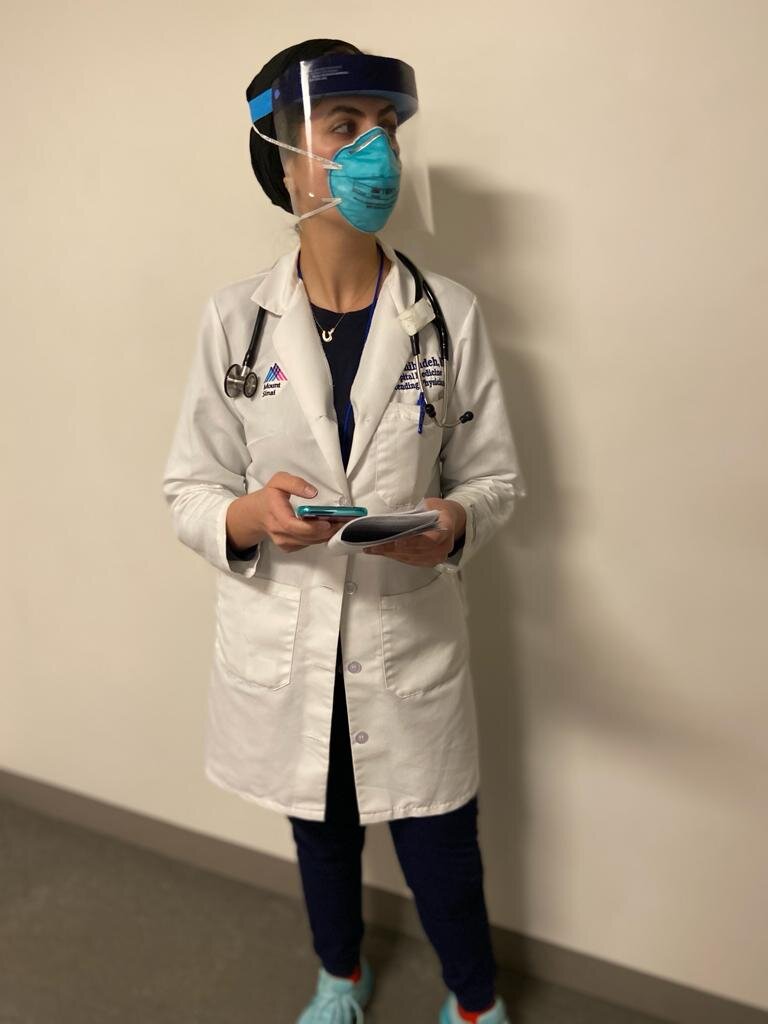A Day in the Life of a COVID-19 Hero: Dr. Sarah Shihadeh
Dr. Sarah Shihadeh says the toughest part about being a doctor right now is “not understanding this disease well yet… there are a lot of mysteries about the virus that are unraveled daily.”
In a previous post, we introduced the beginning of our new blog series — “A Day in the Life of a COVID-19 Hero“. Day by day, we hear about these medical heroes who risk their lives every day to treat COVID-19 patients but we don’t hear from them often.
Due to the nature of the respiratory virus as a contagion, access to hospitals is currently impossible, not only for the media but the family members of COVID-19 patients. Additionally, hospitals have warned their staff about speaking to the media about their workplace concerns during the coronavirus crisis. As a result, we are not able to see the conditions inside hospitals nor do we often get the chance to hear first-hand experiences from patients or medical staff, such as doctors, nurses, and medical technicians, who are working very hard to treat patients.
We will feature a story by an essential worker every week — from doctors to bodega owners to pharmacists - who will share their perspective and insight about what it’s like to be in their shoes for one day. Through this series, we hope to encourage Americans to appreciate our COVID-19 heroes and help us flatten the curve by staying home, respecting social distancing rules, practicing good hygiene habits, and being kinder to one another. We believe in the American people, and we are in this together.
This week, we feature Dr. Sarah Shihadeh from New York. Read about her harrowing and moving experiences below.
Name: Dr. Sarah Shihadeh / Instagram: shihadeh.sarah
Occupation: Physician
Workplace: Mount Sinai Morningside hospital, Upper Manhattan, New York City
Describe a typical day at work during the COVID-19 crisis:
“It starts early, starts with chaos, starts with a few codes. You can never finish your coffee, because you are wearing a mask as soon as you enter the hospital, even at your work space in the office. Once you start seeing patients, the heat really builds up, you are wearing a restrictive mask, face shield, and a non-breathable gown and gloves. Patients are inside small rooms, they are sick, you have to move them around, they have questions, they are afraid, you are sweating under the mask, your face shield is fogging up, another code is called overhead. One patient after another, 4-5 hours go by, and you finally saw everyone. Time to sit, breath, wash your face, pray, eat, have some water.
Another code is called, you gown up again, and back to it. Then you sit to call the families that have been anxiously waiting to hear from you, they can't see their loved ones, you become their eyes and ears at the hospital, some are angry, most are grateful, and everyday you have to tell a few that their loved ones will likely die alone at the hospital, and no, they can't see come see them, but I'm happy to get my iPad and help them see their grandmother, who is old, and a bit confused at this time. Yes, I have been there at the bedside, when patients took their last breaths while families watched at home, crying under my face mask, shield and protective gown. 12 hours later, you are tired, thirsty, your voice is hoarse from speaking under the mask, you just want to go home, but there was that one patient, who did not look so good, so you gown up again, and you go see them.
14 hours later, you are home, you feel used, drained and lifeless. But then on the way home, the cab driver says "God bless you" the doorman tells you " are a hero", and you turn on your phone to countless tests and voicemails all cheering you on and praying for your health and strength. You smile, breath, sleep, wake up and do it again.”
The moment I realized COVID-19 was a deadly pandemic was when:
“I saw the Italian doctors speak up about the gravity of the situation.”
The scariest/toughest part about being a doctor right now:
“Not understanding this disease well yet. There are a lot of mysteries about the virus that are unraveled daily.”
The highlight of my work day is:
“Many things actually. When I send a patient home, when I tell a patient they are doing okay and they will be going home soon. When I see my colleagues from outside the hospital helping out. The 7PM daily cheer for health workers, the little messages left on the sidewalks from the community.
Misconceptions about COVID-19 and/or your work during this crisis that you’d like to dispel:
“It doesn't just affect the old and sick, the young and healthy are equally affected.”
Are you afraid of catching COVID-19?:
“Not at work actually, because I wear protective gear, but definitely outside in the community. The grocery store is a nightmare.”
Advice to everyone:
“STAY AT HOME, eat healthy, stay active INDOORS or [in your] backyard (I live in NYC, I am lucky to have a window), and utilize all the tele-health resources provided by your doctors and hospital before deciding to go to urgent care or the hospital. Check your local hospital main page, you can make virtual appointments with qualified doctors and they can help guide you on the necessary steps. Walking into any health care facility at this time, is a COVID sentence. If you didn't have it before, you will pick it up in the urgent care center, the ER (emergency room) or the hospital.”
Anything else?
“We should all remember those who are likely in need but are not reaching out, many people lost their jobs, their health insurances. Donate to your local food banks, local charities and check in on each other. Some people live alone and have no one. Kindness in these times is not optional.”
Personal protective equipment, such as a medical gown, face mask and face shield, protect Dr. Shihadeh as she treats patients infected by COVID-19.





